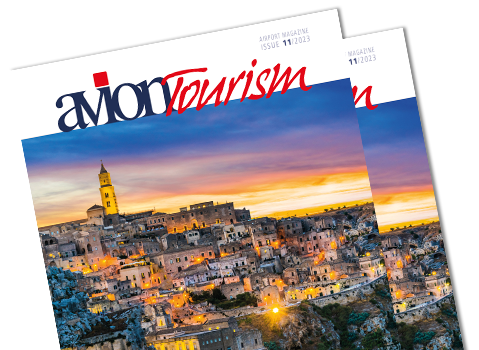The green and cultural heart of Croatia
Zagreb, the capital of Croatia, lies on the southern slopes of Mount Medvednica and develops along the banks of the Sava River. The city stands out for its large green spaces and serene atmosphere, making it a welcoming and pleasant place to visit. With a temperate continental climate, Zagreb offers warm and sunny summers, with temperatures between 20 and 25°C, and cool winters, with averages ranging between 1 and 5°C. Any time of the year is therefore perfect for discovering this city rich in nature, culture and history.
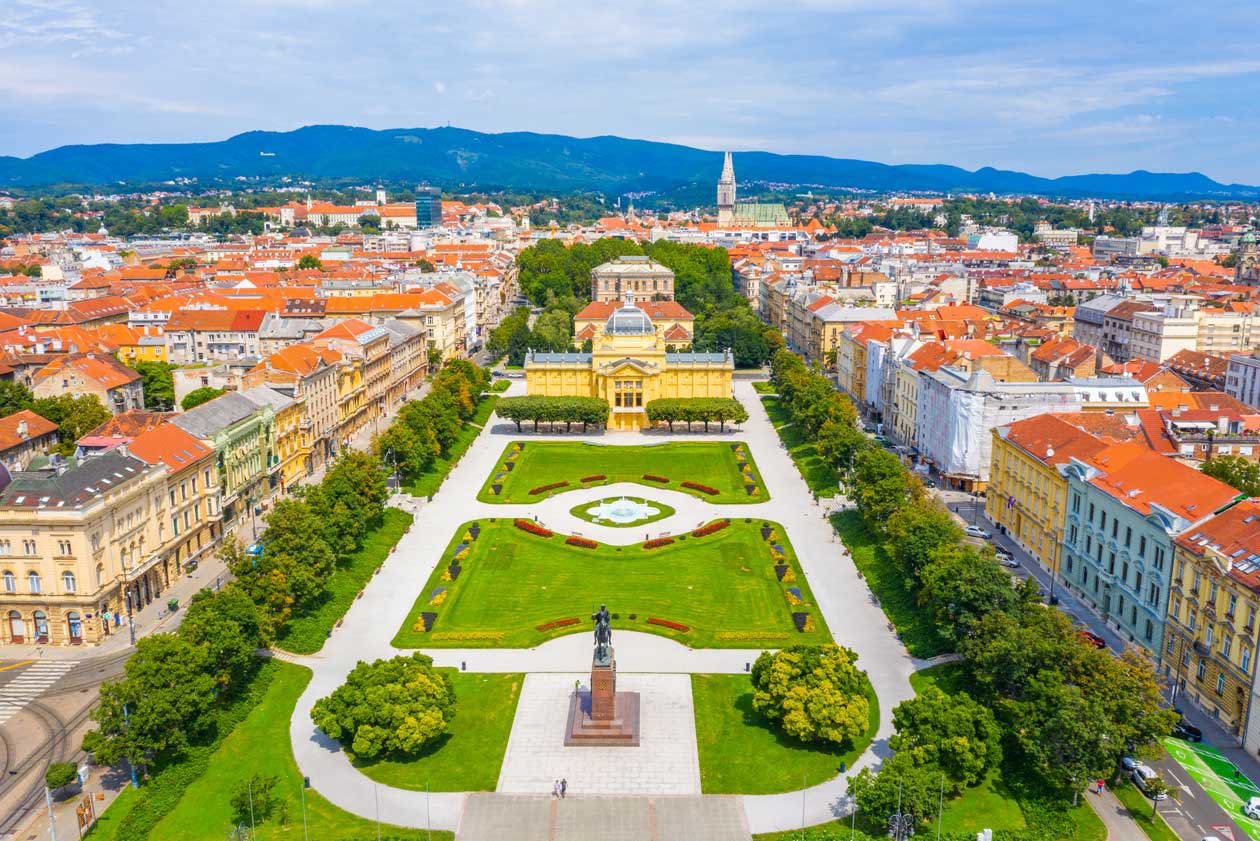
Zagreb, view from above with the mountains on the horizon Copyright © Sisterscom.com / Depositphotos
The history of Zagreb has its roots in 1094, when the diocese was founded and the construction of the cathedral began. The city developed around two adjacent hills with their respective two settlements: Gradec, now known as the Upper Town, and Kaptol, once separated by a stream that now corresponds to the lively Tkalčićeva street. The thousand-year history of the city is intertwined with a modern vitality, creating a unique mix that enchants.
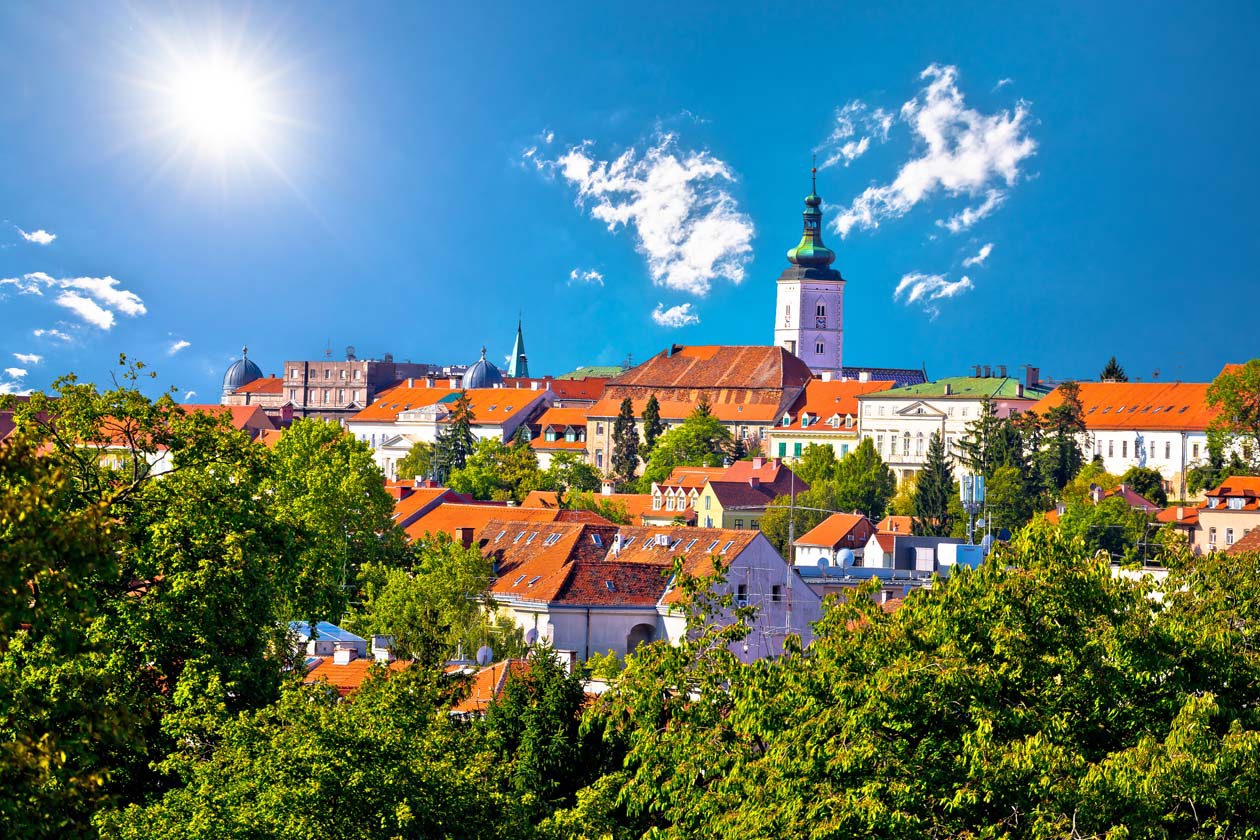
Zagreb Upper Town, view from above Copyright © Sisterscom.com / Depositphotos
Walking through the streets of Zagreb means immersing yourself in a metropolitan atmosphere that retains calm and tranquility. In fact, unlike many other European capitals, here stress gives way to spontaneous encounters and moments of authentic discovery. Every corner tells a story, from historical monuments to parks, from cozy cafes to the lights of the gas street lamps of the Upper Town that illuminate the night.
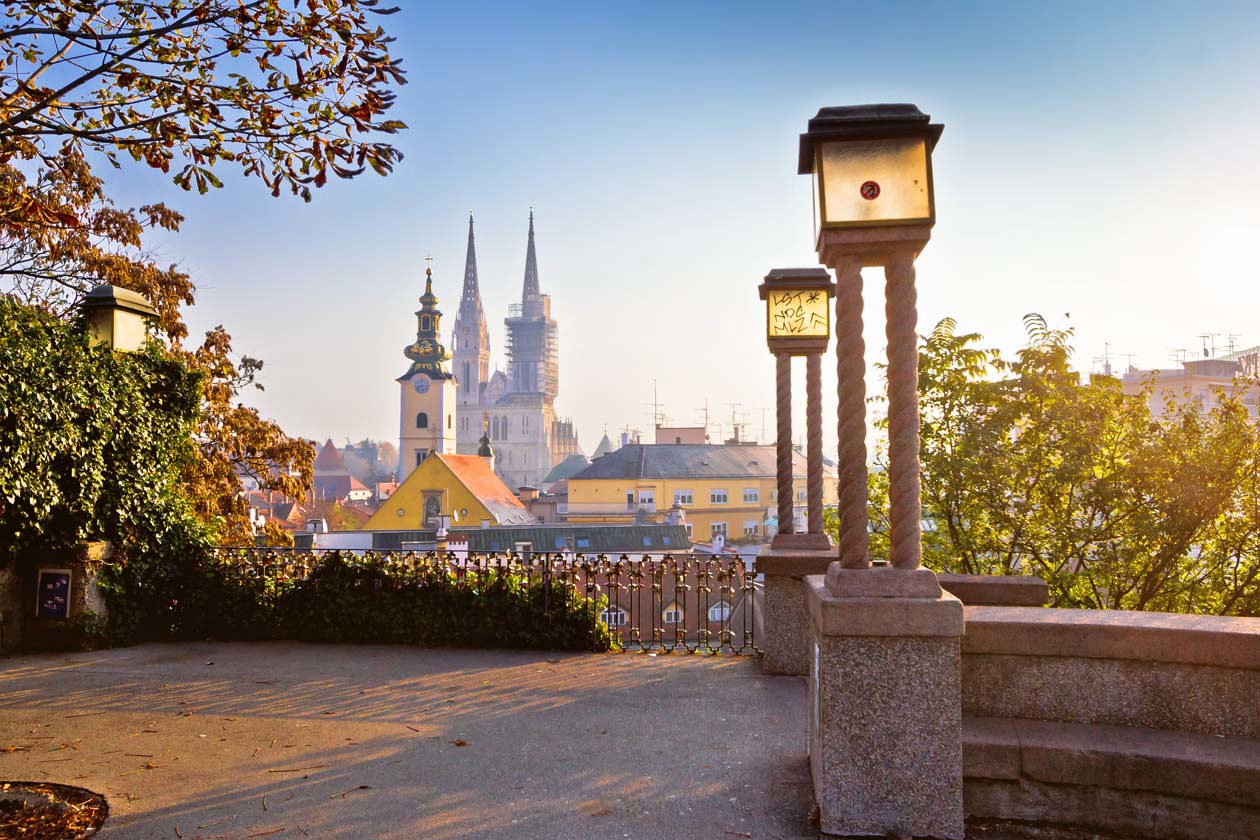
Zagreb Upper Town with a view of the Lower Town Copyright © Sisterscom.com / Depositphotos
The Upper Town: the medieval charm of Gradec
The Upper Town of Zagreb, also known as Gradec, is the historical and romantic heart of the Croatian capital. Here, the narrow cobbled streets, medieval monuments and panoramic views of the Lower City create a unique atmosphere. One of the best ways to get there is to board the Zagreb funicular, which has been running since 1890.
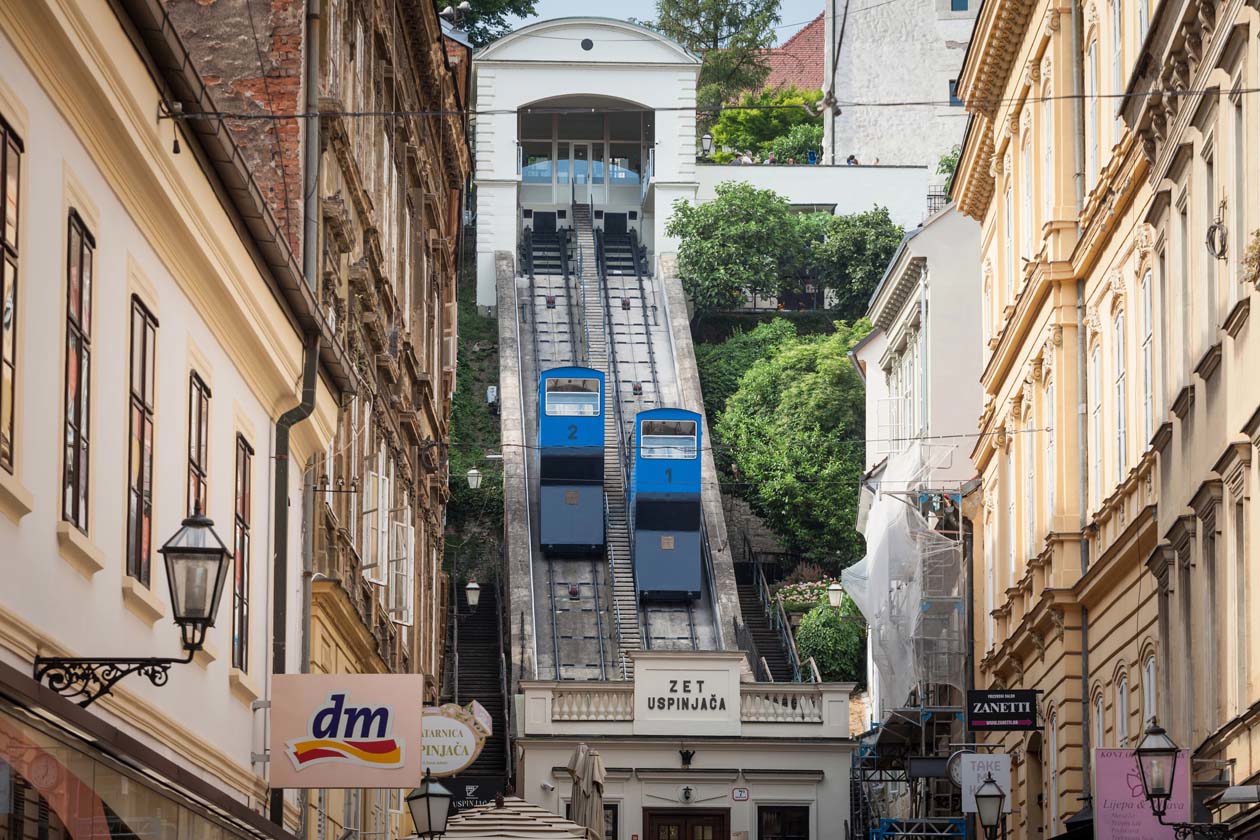
Zagreb's funicular connecting the Lower Town to the Upper Town Copyright © Sisterscom.com / Depositphotos
This funicular not only offers a quick connection, but also gives a little trip back in time. Walking along the Strossmayer Avenue, you can admire one of the most romantic views of the Lower Town. Not far away, stands the Lotrščak Tower, from which every day at noon a cannon fires a shot to mark the time. Dating back to the thirteenth century, the tower was part of the southern gate of the Gradec city wall. Near the tower is the statue of the poet Antun Gustav Matoš, made in 1972 from aluminum by the sculptor Ivan Kožarić, a tribute to the poet's love for his city.
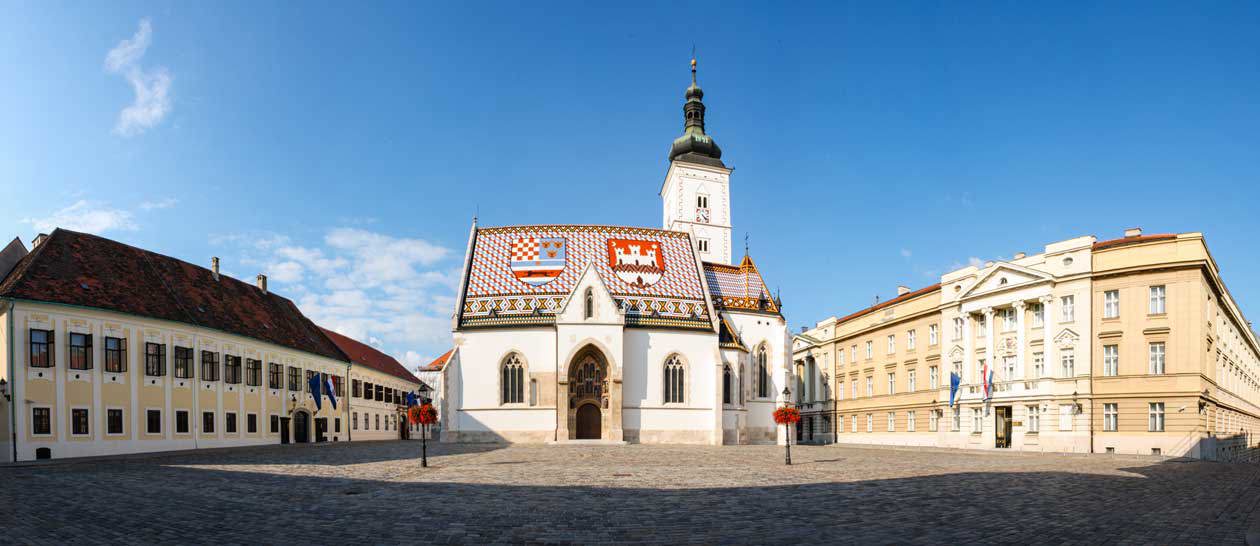
St. Mark's Square with St. Mark's Church in Zagreb's Upper Town Copyright © Sisterscom.com / Depositphotos
Another pearl of the Upper Town is St. Mark's Square, overlooked by the famous St. Mark's Church, with its iconic decorated roof representing the coats of arms of Croatia and Zagreb. Around the square are the sumptuous and elegant buildings of the Government, Parliament and the Constitutional Court, witnesses of the country's political history. You cannot leave the Upper Town without visiting the Stone Gate, a place of devotion where a miraculous Madonna protects the citizens.
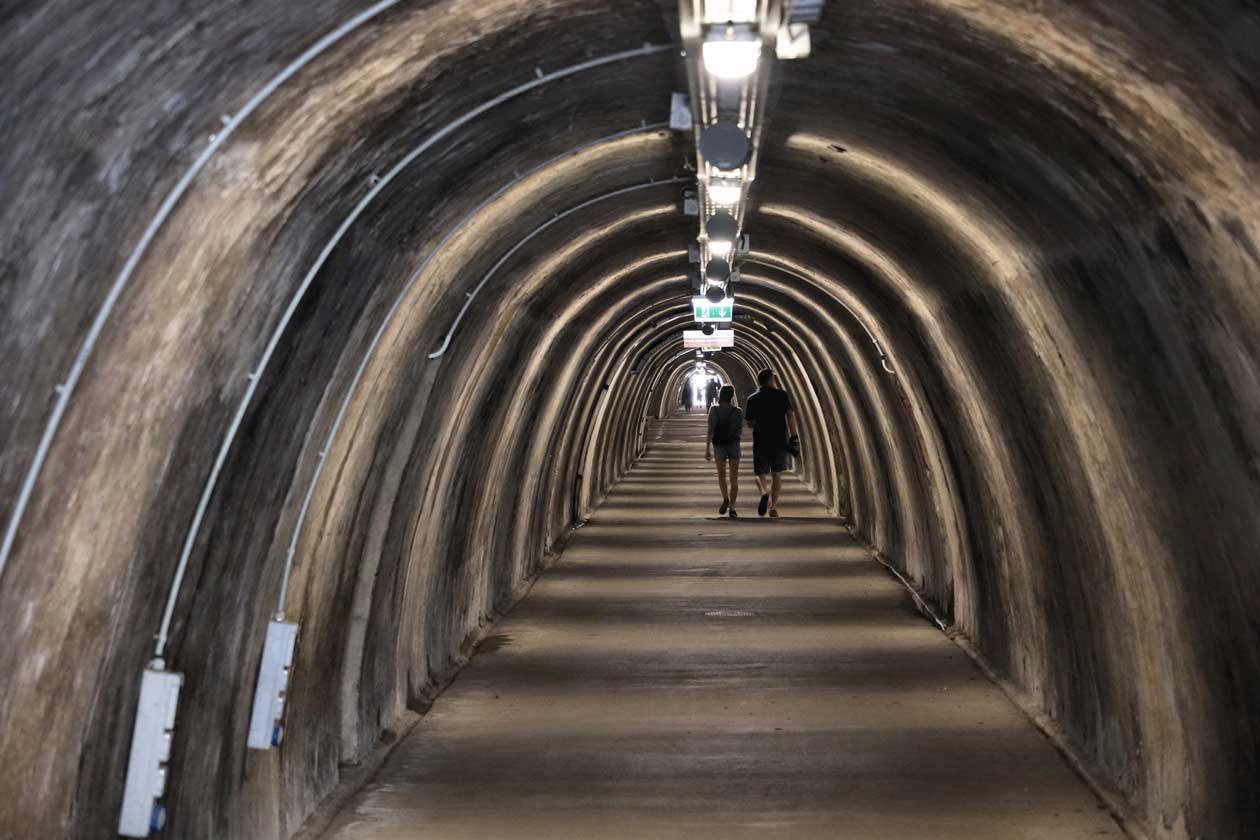
Zagreb's pedestrian Grič Tunnel Copyright © Sisterscom.com / Depositphotos
Among the peculiarities of the area there is also the Grič Tunnel, an underground passage that connects two of the main streets of the city, Mesnička and Radićeva. It is a World War II tunnel that offers cool shelter on hot summer days and is a less conventional access point to the heart of the city.
The Lower Town: a lively center, surrounded by greenery
The Lower Town of Zagreb is the modern and pulsating center of the capital, where some of the most famous and popular attractions are located. Ban Jelačić Square is the heart of the city, a lively place to start a walk to Špica, one of the most elegant areas. This path, which leads from the main square Trg ban Jelačić to Petar Preradović Street, is dotted with cafes and terraces that offer a perfect vantage point of city life.
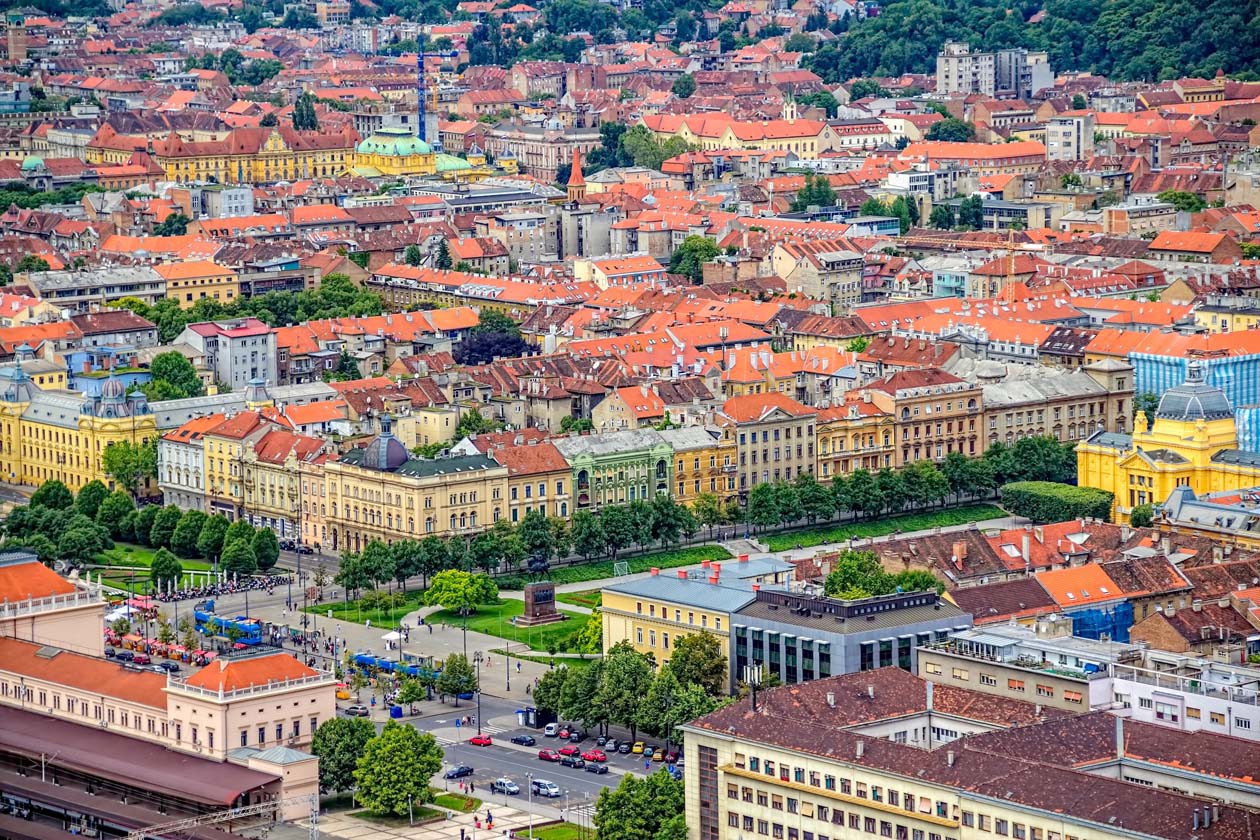
Top view of Milan Lenuci's Horseshoe in Zagreb Copyright © Sisterscom.com / Depositphotos
One of the distinctive elements of the Lower Town is Milan Lenuci's Horseshoe, a complex of nineteenth-century parks and squares that create a green lung in the heart of the city. Among them, Zrinjevac Park stands out for its beauty: a romantic oasis in the heart of the city that houses busts of historical figures, art galleries and the Archaeological Museum. In the center of the park is the Music Pavilion, which every summer becomes the stage for outdoor concerts.
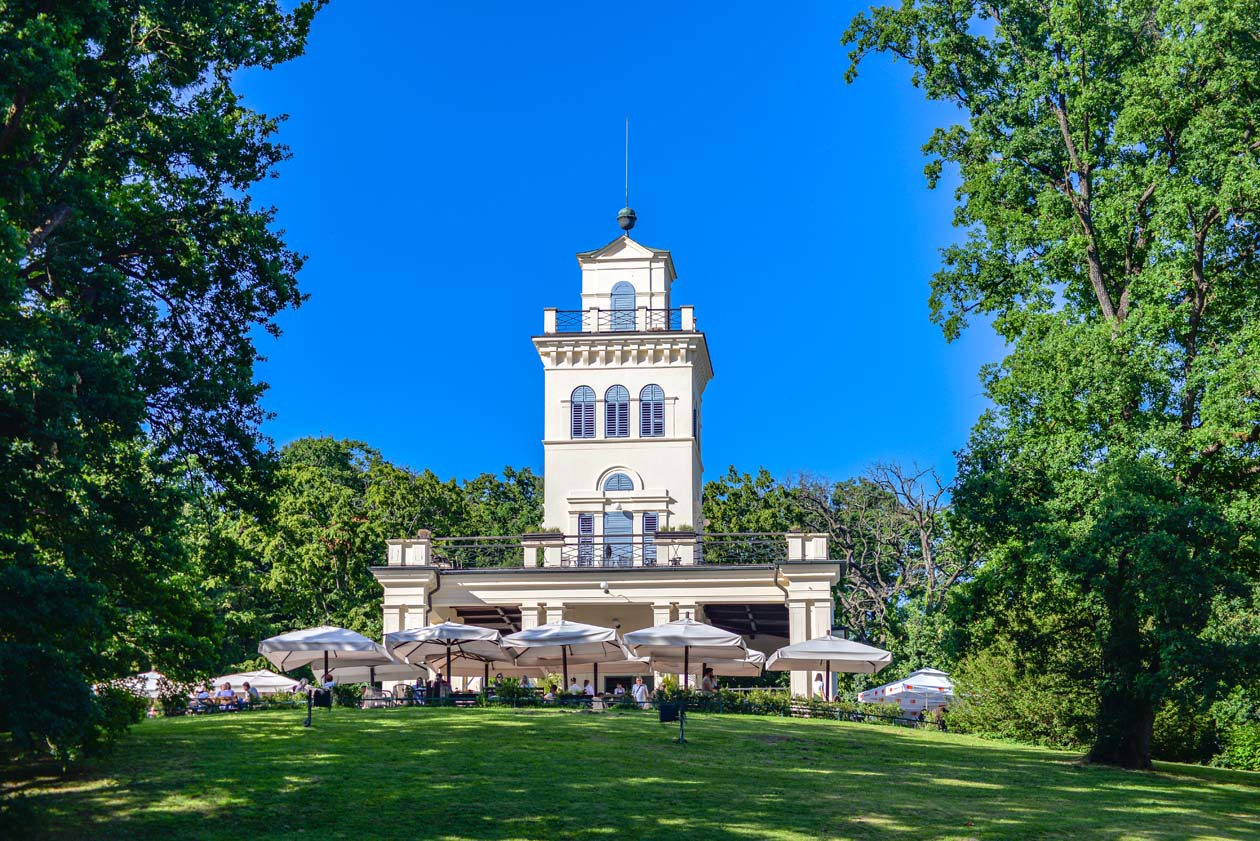
Maksimir Park in Zagreb Copyright © Sisterscom.com / Depositphotos
Another green wonder of the Lower Town, on the edge of the Horseshoe of Lenuci, is the Botanical Garden, a corner of peace where you can admire over 5,000 species of plants, some rare and protected. Not far away, Maksimir Park, with its 316 hectares, offers a perfect retreat for nature lovers. This park, inaugurated in 1794, is one of the first public parks in Southeast Europe and is home to five lakes, streams, the Zoological Garden, the Eco Pavilion and the Belvedere.
Another must-see place with a beautiful park is the monumental Mirogoj cemetery embellished with sculptures that combine art and spirituality as well as neo-Renaissance arches, designed by Hermann Bollé, which make it a real open-air gallery.
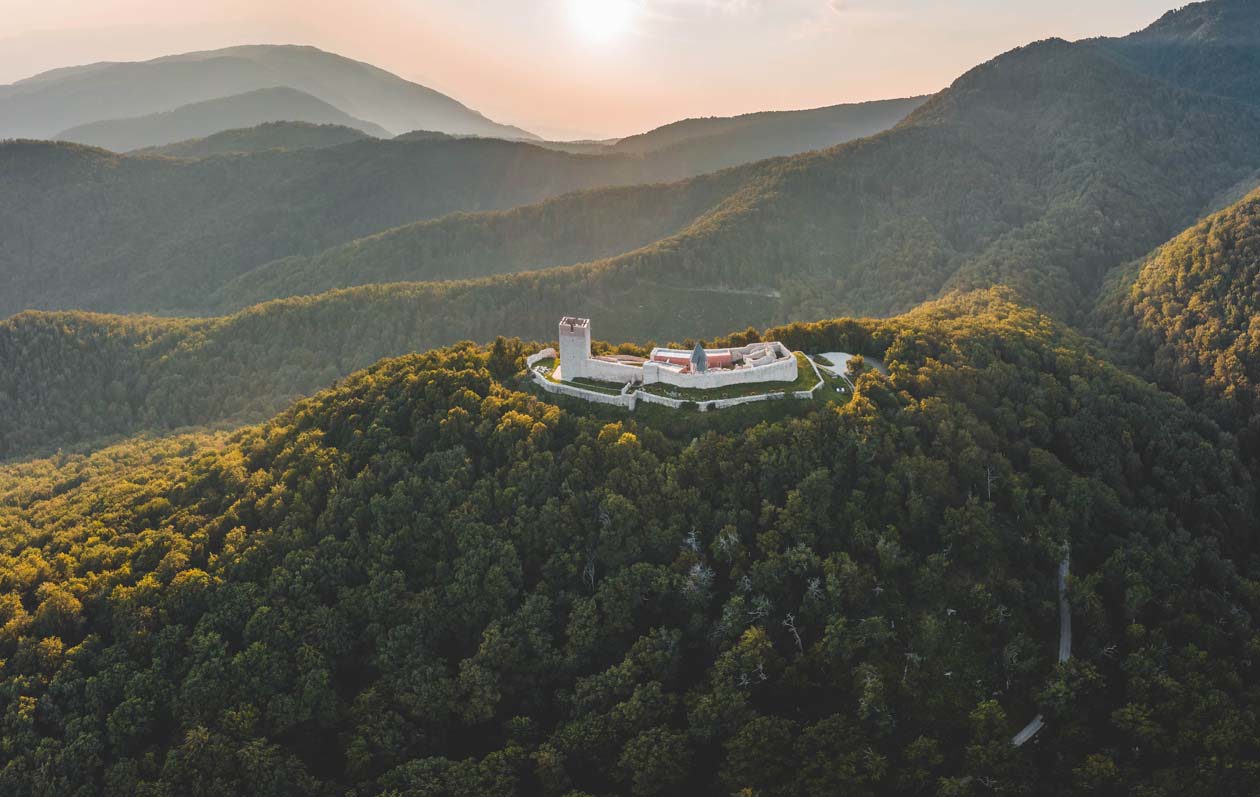
The medieval village of Medvedgrad, near Zagreb Copyright © Sisterscom.com / Depositphotos
Nature lovers can fully explore Mount Medvednica, visible from every corner of the city, a perfectly preserved natural park and a favorite destination for out-of-town trips with huts, hiking trails and the suggestive Veternica paleontological cave. Its highest peak, Sljeme, offers breathtaking views and culinary delights in local huts. In addition, on the slopes of Medvednica you can visit Medvedgrad, a medieval village built in 1242 after the Tatar invasion, which houses the Gothic chapel of Saints Philip and James and the Altar of the Fatherland, dedicated to the Croatian fallen.
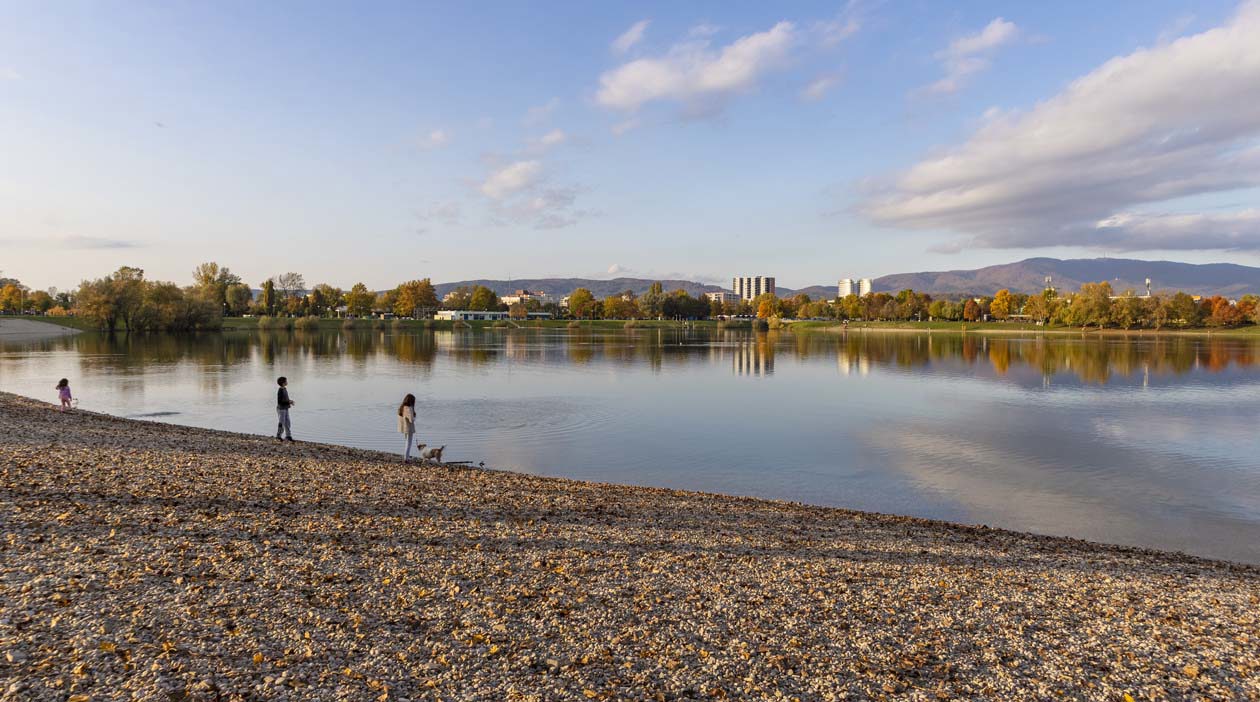
Jarun Park in Zagreb Copyright © Sisterscom.com / Depositphotos
For recreation and relaxation you can also reach the Jarun Park with pebble beaches and cycle paths, perfect for those looking for sports activities or simply a moment of quiet or a stop in the numerous cafes and restaurants. Or you can reach Bundek Park, between the Liberty Bridge (Most slobode) and the Youth Bridge (Most mladosti) which offers lakes, beaches, paths, cycle paths and modern playgrounds, ideal for families and sportsmen.
Events between art, music and traditions
Zagreb is a city in cultural turmoil, with events and festivals that enliven streets and squares all year round. The courtyards of the Upper Town open their doors every July, revealing hidden treasures among art, music and gastronomy. Also in July, the International Folklore Festival since 1966 celebrates Croatian traditions with performances that combine dance and music. In August, the Cest is d'Best street festival transforms Zagreb into an open-air stage, where street artists put on unforgettable performances. While, during the Christmas period, the Zagreb Advent (elected the best Christmas market in Europe for 3 consecutive years since 2016) conquers the heart with lights, music, souvenirs, handmade objects and local delicacies.
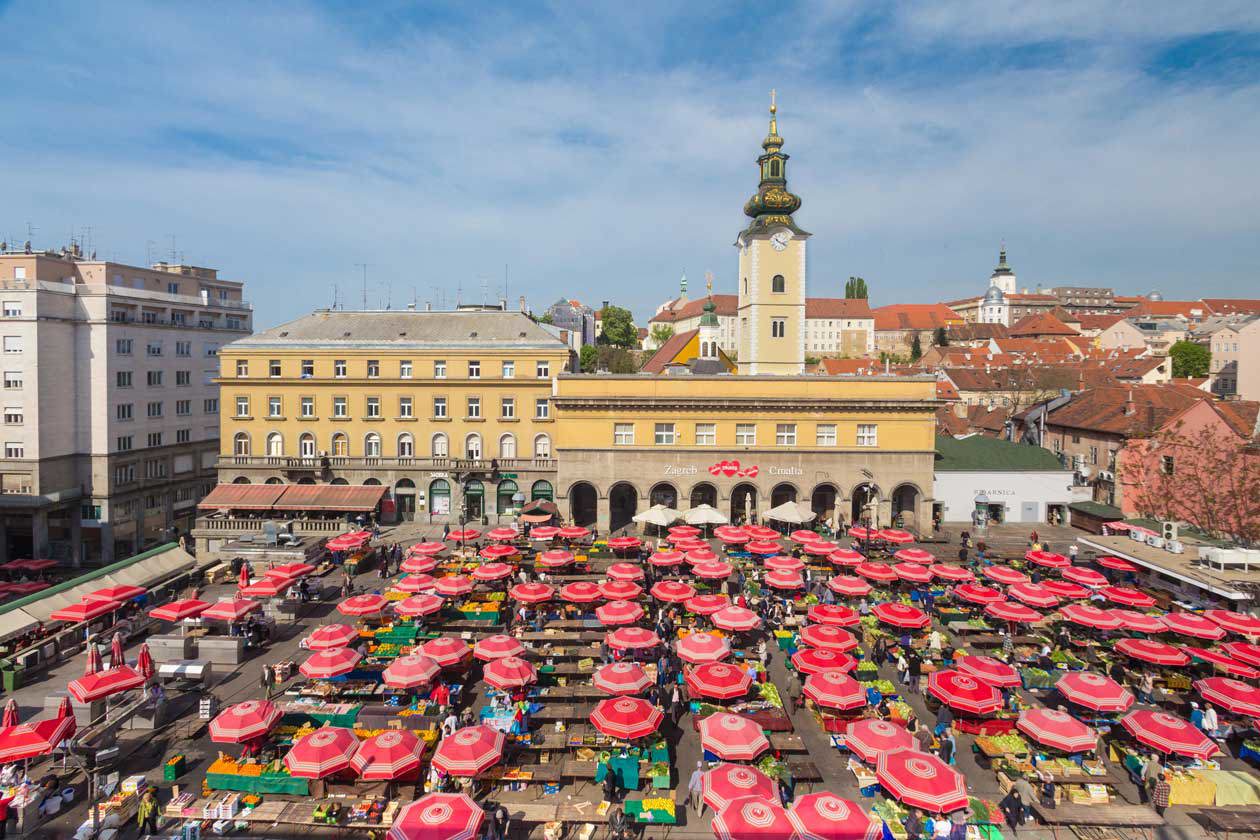
Dolac Market in Zagreb Copyright © Sisterscom.com / Depositphotos
Zagreb cuisine
Zagreb's cuisine is a hymn to tradition and authentic flavors. Special tastings can be tried in the various restaurants of the city and especially under the well-known Šestine umbrellas that adorn, at the foot of Sljeme, the Village of Šestine and the Dolac market where you can taste cured meats, cheeses, sour cherries, the unmissable Štrukli (cooked or au gratin and enjoyed both as a dessert or as a first course), turkey with mlinci (a type of local pasta) or Zagreb steak (breaded veal slice stuffed with cheese and ham).
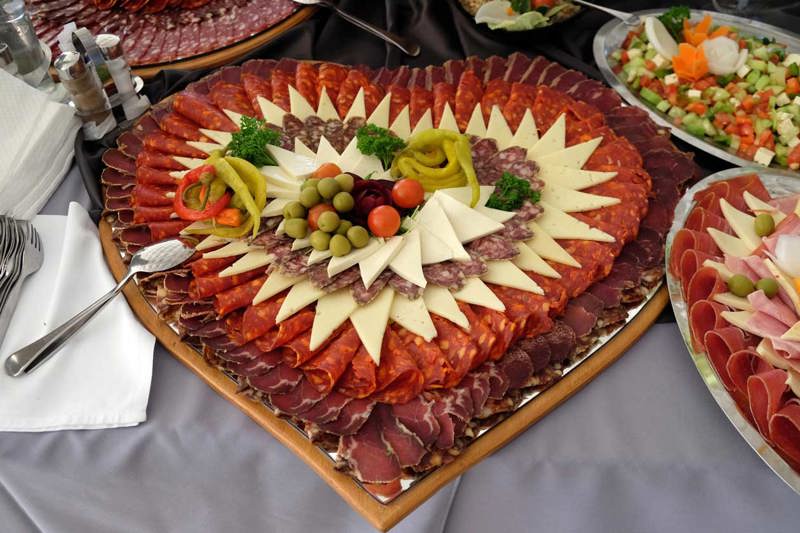 Typical Zagreb cheeses and sausages
Typical Zagreb cheeses and sausages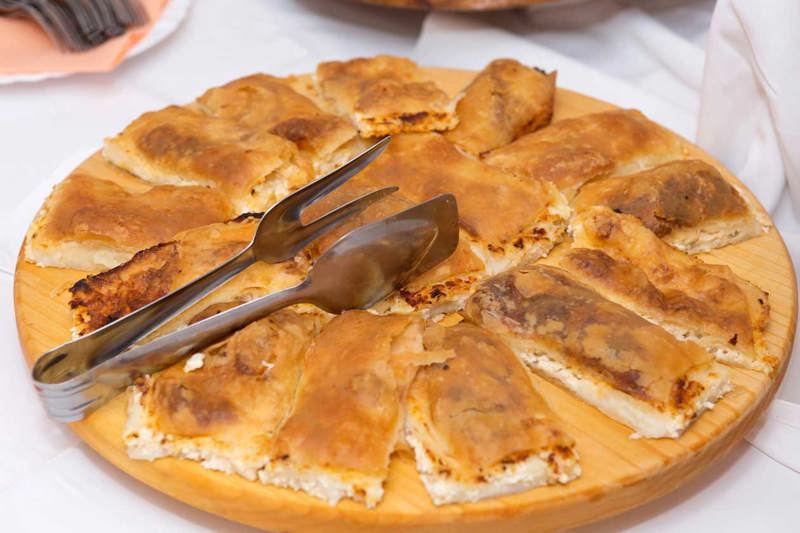
Štrukli

Heart of Licitar
Photo copyright © Sisterscom.com / Depositphotos
Finally, the famous sweets of Zagreb: cream pastries, apple strudel, the Peppered Biscuit (paprenjak) and the Heart of Licitar, a gingerbread that was once given as a sign of friendship and love, whose production has been included in the UNESCO list of Intangible World Heritage.
Texts by Alisè Vitri
Avion Tourism Magazine
Photos and visuals for editorial use only: Copyright © Sisterscom.com / Depositphotos
All rights reserved. Copyright © Sisterscom.com
Tourist Board
Partnership with Booking.com
Where to stay in Zagreb
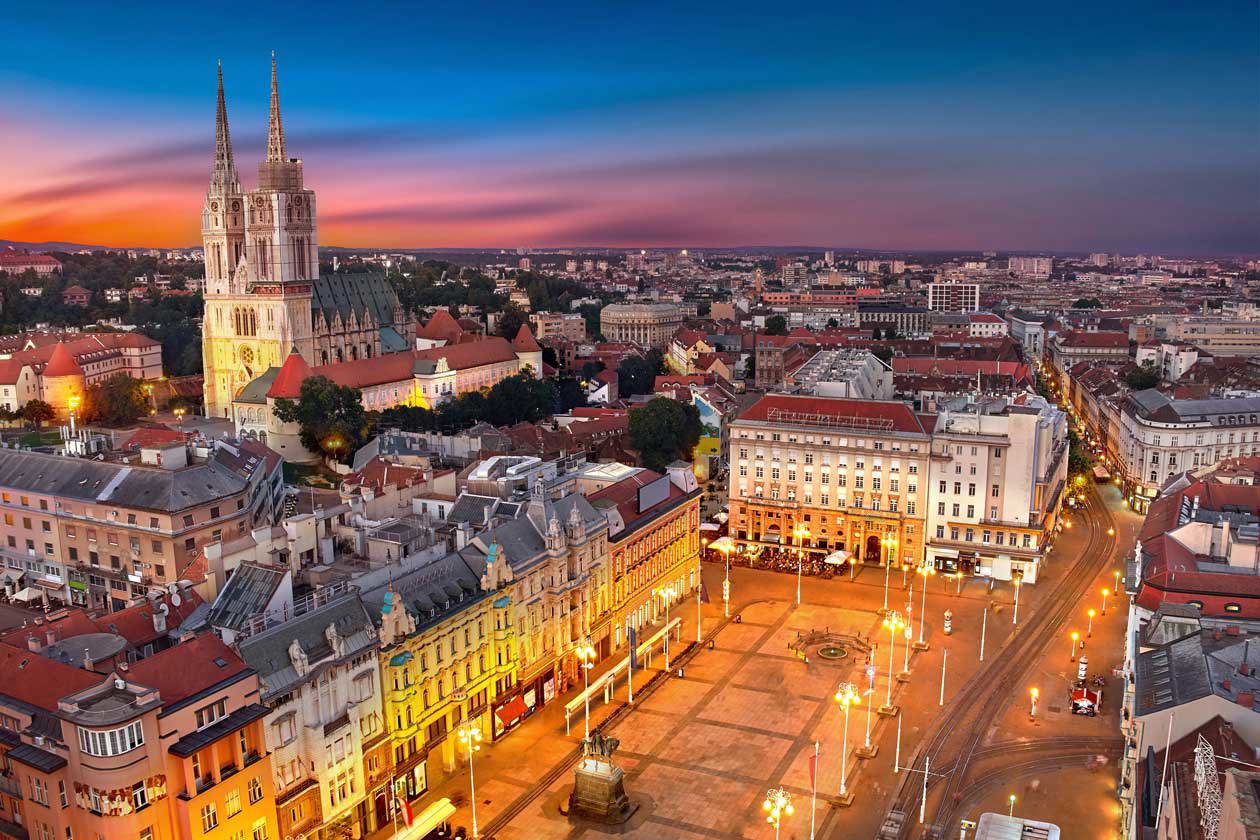
Zagreb. Photo: Copyright © Sisterscom.com / Depositphotos
Zagreb offers various possibilities for accommodation in facilities equipped with the best services.
To find the ideal hotel and the best offers , you can search by stars but also by places of interest.
STARS
Hotel by stars and services offered:
B&B, HOUSES, APARTMENTS
Stays in homes and hostels:
ACCOMMODATIONS
Hotels in the neighborhoods
PLACES OF INTEREST
Hotels in tourist areas
PLACES OF INTEREST
PLACES OF INTEREST
Hotels in tourist areas
REGION
Hotels in the region
AIRPORT
Airport Hotels
WHERE TO GO IN ZAGREB
Zagreb tourist attractions
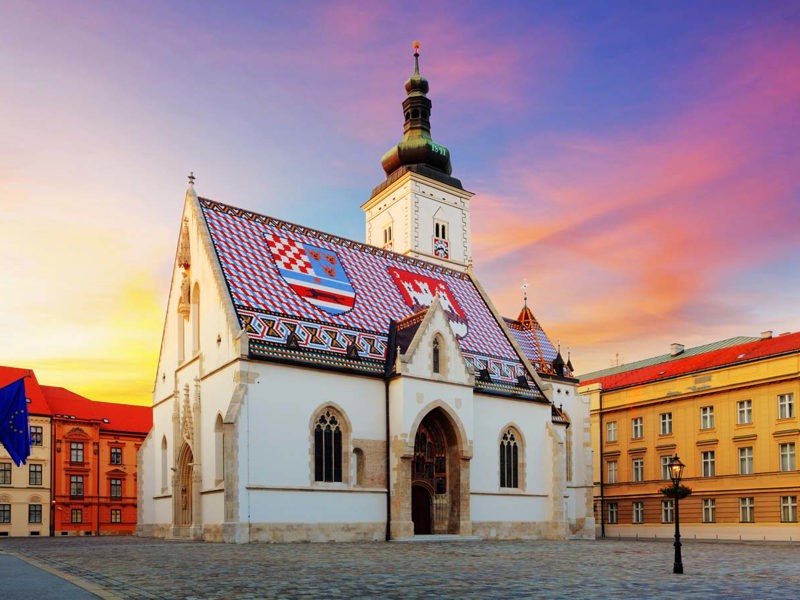
Copyright © Sisterscom.com / Depositphotos
St. Mark's Square and St. Mark's Church
St. Mark's Square, in the heart of Zagreb's Upper Town, is one of the most iconic and fascinating places in the Croatian capital. In the center of the square stands the splendid Church of St. Mark, famous for its roof decorated with colorful ceramic coats of arms representing Croatia, Dalmatia and Slavonia. Dating back to the thirteenth century, the church is a masterpiece of Gothic architecture, with Baroque details inside and an intricately carved stone portal. Around the square are some of the most important buildings in the city, including the Government Palace, the Parliament and the Constitutional Court, making it the historical and political center of Zagreb.
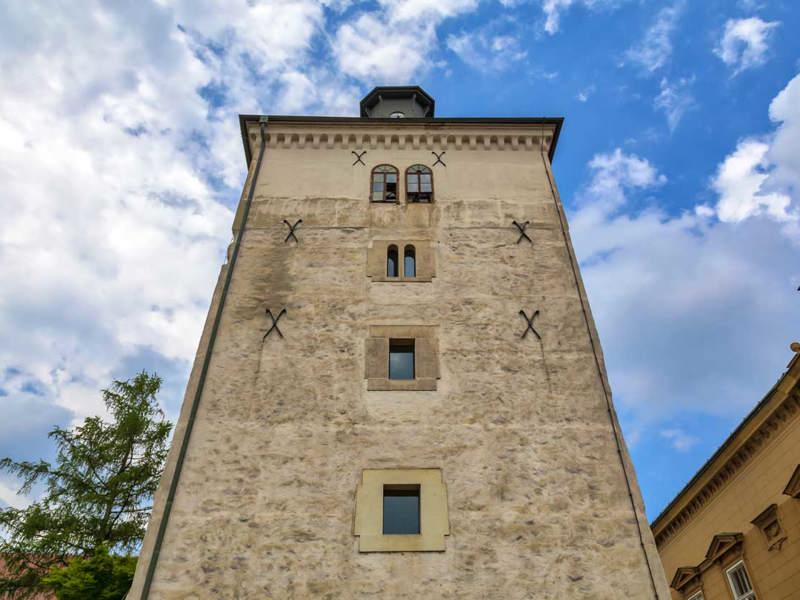 Copyright © Sisterscom.com / Depositphotos
Copyright © Sisterscom.com / DepositphotosLotrščak Tower
The Lotrščak Tower is located in the Upper Town of Zagreb and is one of the most recognizable historical symbols of the Croatian capital. Built in the thirteenth century as part of the city's defensive walls, the tower was intended to protect the southern gate of Gradec. Today, it is famous for its cannon, which fires a shot every day at noon, a tradition loved by the citizens and curious for visitors. From its panoramic terrace you can enjoy a spectacular view of the Lower Town and the rooftops of Zagreb. The Lotrščak Tower represents history, tradition and beauty and is a must-see for those visiting the city.
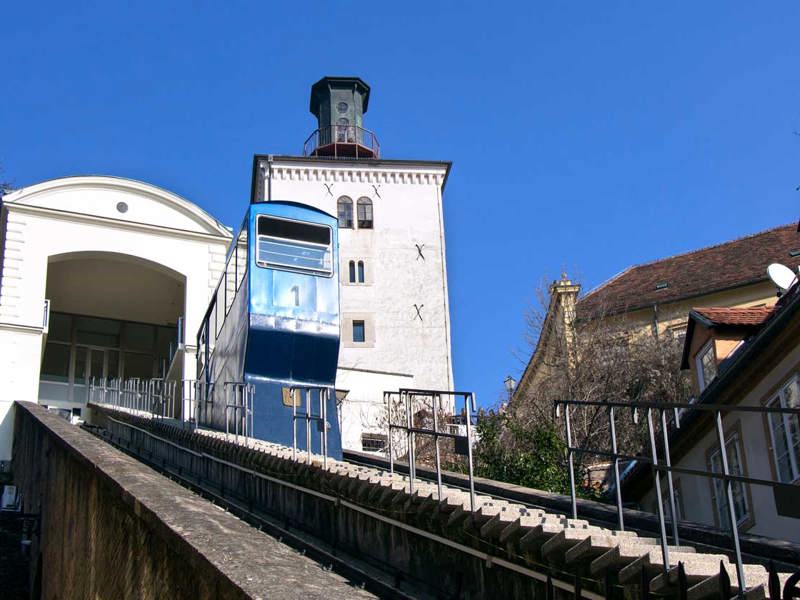 Copyright © Sisterscom.com / Depositphotos
Copyright © Sisterscom.com / DepositphotosZagreb Funicular
The Zagreb funicular is one of the city's most fascinating attractions, connecting the Upper Town and the Lower Town on a short but charming route. Inaugurated in 1890, it is the oldest and shortest funicular in the world still in operation, with a journey of only 66 meters that takes about a minute. Despite its brevity, it offers lovely views of the city and a unique way to explore Zagreb. Located near the Lotrščak Tower, the funicular is an essential part of the city's history and identity, providing a picturesque experience in the heart of the Croatian capital.
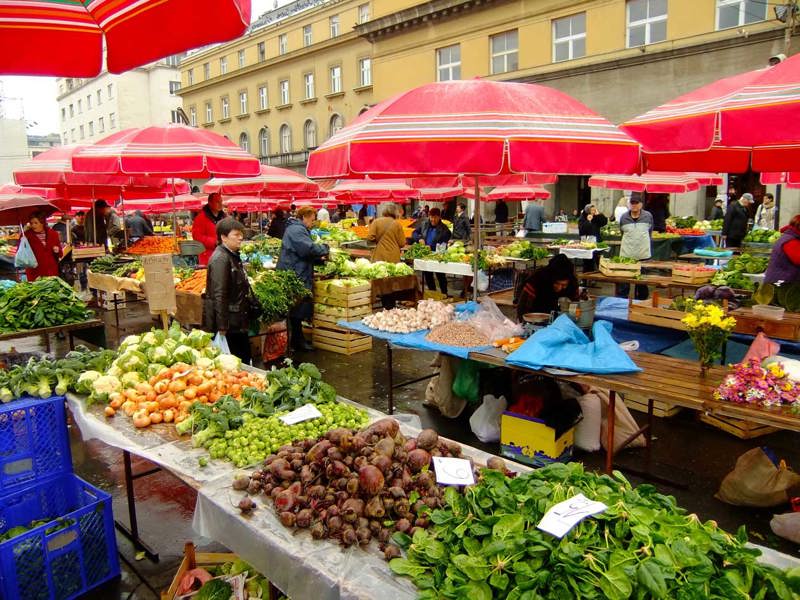 Copyright © Sisterscom.com / Depositphotos
Copyright © Sisterscom.com / DepositphotosDolac Market
The Dolac Market is the beating heart of Zagreb's daily life, a place where tradition and authenticity meet. This open-air market is located in the center of the city, near the main square Trg ban Jelačić, and is famous for its vibrant red Šestine umbrellas, which create a unique atmosphere. Here you can find fresh local products, from colorful vegetables to artisanal cheeses, as well as Croatian specialties such as honey, jams and the famous Zagreb bread. It offers an unmissable experience to taste the authentic flavors of Croatia.
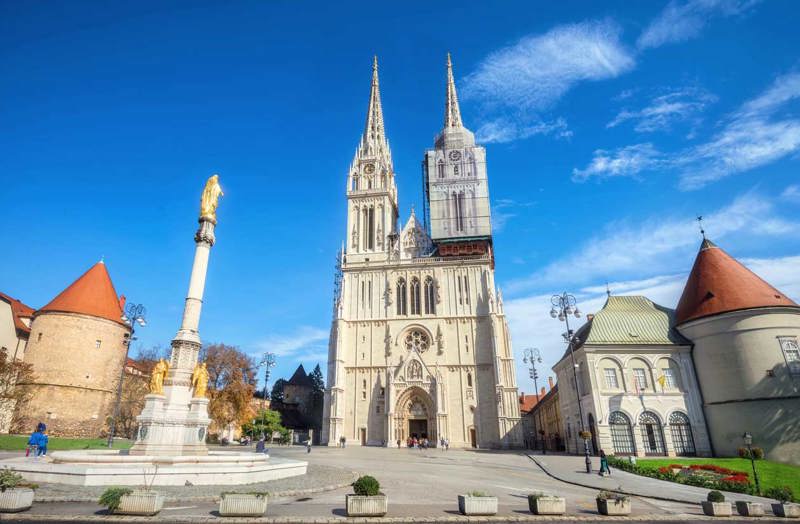 Copyright © Sisterscom.com / Depositphotos
Copyright © Sisterscom.com / DepositphotosZagreb Cathedral
The Zagreb Cathedral in the bustling Lower Town is the religious and architectural symbol of the Croatian capital. Dedicated to the Assumption of the Blessed Virgin Mary, this impressive neo-Gothic structure is the largest sacred building in Croatia. Its origins date back to the thirteenth century, but its current appearance was completed in the nineteenth century after a restoration that gave it its iconic twin towers. Inside, the cathedral holds beautiful frescoes, works of art and the archbishop's treasure. Surrounded by a garden full of exotic plants, the cathedral is not only a place of worship but also a fascinating testimony to Zagreb's history and culture.
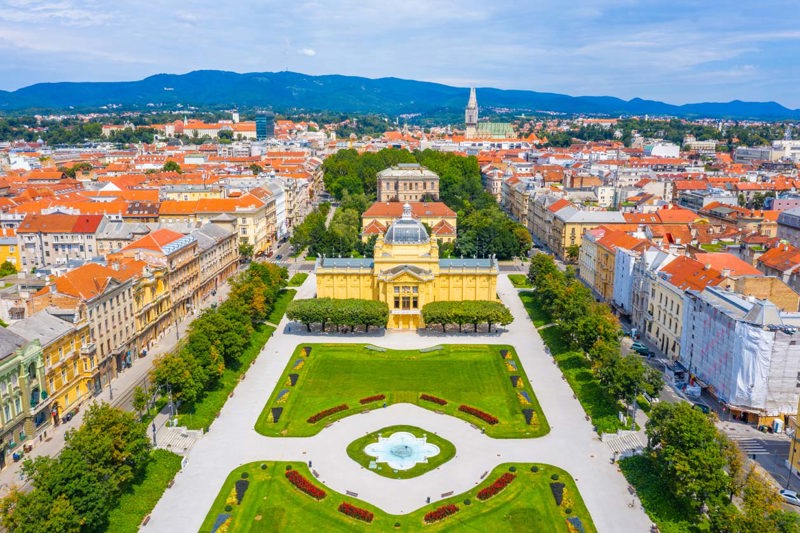 Copyright © Sisterscom.com / Depositphotos
Copyright © Sisterscom.com / DepositphotosHorseshoe Lenuci
The Lenuci Horseshoe is an urban masterpiece in Zagreb, conceived in the nineteenth century by the urban planner Milan Lenuci. This green complex develops in the shape of a horseshoe in the Lower Town, connecting eight squares and parks surrounded by nature. These include the Zrinjevac Park, with its historical busts, the Music Pavilion and the Botanical Garden, which is home to over 5,000 plant species. Il Ferro di Cavallo is an oasis of tranquility in the heart of the city, a place where history, art and nature are harmoniously intertwined. Perfect for relaxing walks, it offers a unique experience to discover the greenest and most romantic face of Zagreb.
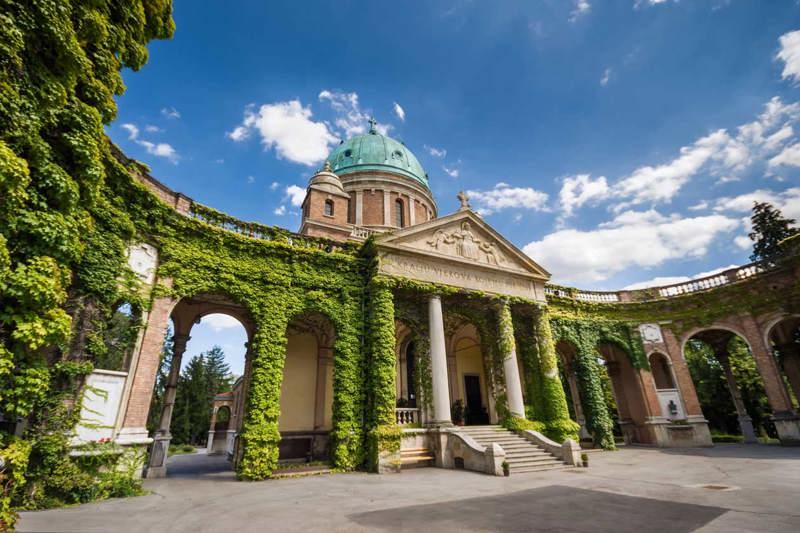 Copyright © Sisterscom.com / Depositphotos
Copyright © Sisterscom.com / DepositphotosMirogoj
The Monumental Cemetery of Mirogoj, located at the foot of Mount Medvednica, is one of the most impressive attractions in Zagreb, combining art, history and spirituality. Designed by architect Hermann Bollé, the cemetery is famous for its neo-Renaissance arcades, almost 500 meters long, and decorated pavilions. In addition to being a place of eternal rest, Mirogoj is an enchanting park and an open-air art gallery, with sculptures and monuments that tell the story of Croatia. Illustrious personalities from the political, artistic and cultural world are buried here. It offers an unmissable visit for those who want to discover another side of Zagreb.
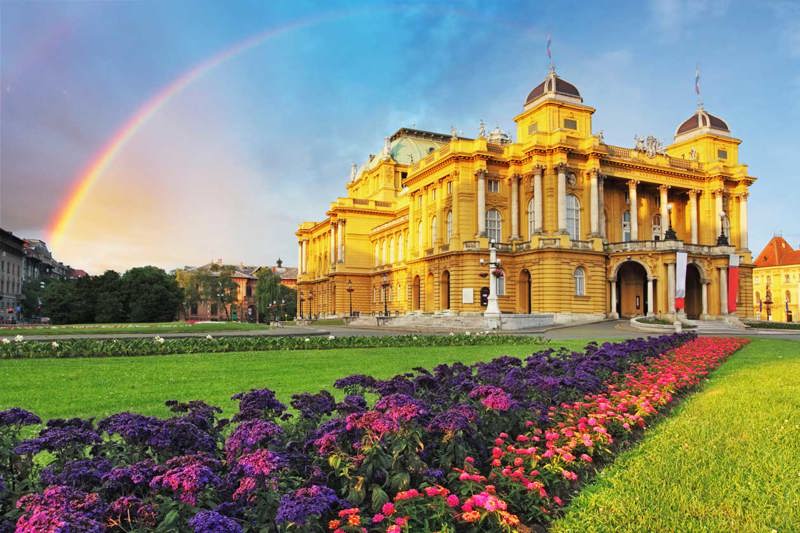 Copyright © Sisterscom.com / Depositphotos
Copyright © Sisterscom.com / Depositphotos Zagreb Theatre
The Croatian National Theatre in Zagreb, a symbol of the capital's cultural scene, is an architectural masterpiece in the neo-baroque style. Inaugurated in 1895 by Emperor Franz Joseph I, the theater stands majestically in the heart of the Lower Town, inside the famous Lenuci Horseshoe. Its elegant façade and sumptuous interiors host a rich program of operas, ballets and theatrical performances of the highest caliber. A reference point for lovers of the performing arts, the theater represents a center of excellence and artistic innovation. Its history, timeless charm and refined atmosphere make it a must-see for anyone visiting Zagreb.
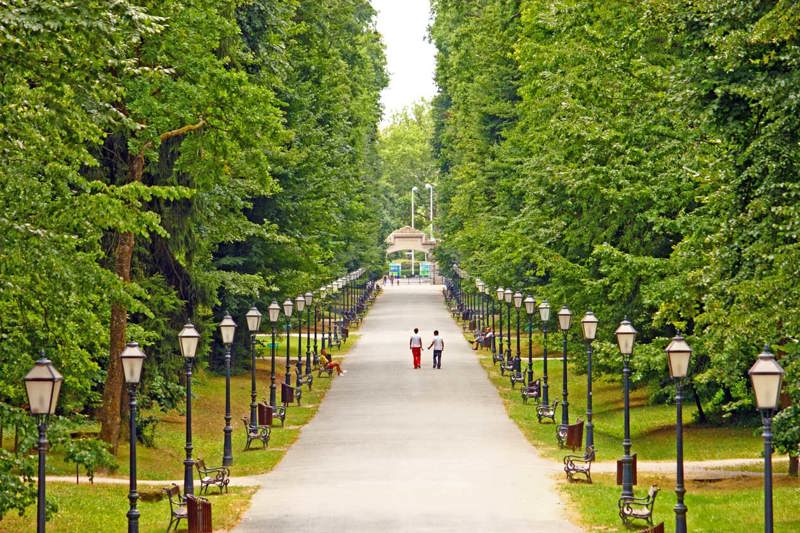 Copyright © Sisterscom.com / Depositphotos
Copyright © Sisterscom.com / DepositphotosMaksimir Park
Maksimir Park, with an extension of 316 hectares, is close in size to the famous Central Park in New York. Opened in 1794, it was the first public park in Southeast Europe and owes its name to its founder, Bishop Maximilian Vrhovac. Designed in the romantic style of English gardens, Maksimir is a peaceful oasis with forests, five lakes, streams and several structures such as the Zoological Garden, the Echo Pavilion and an enchanting Belvedere.
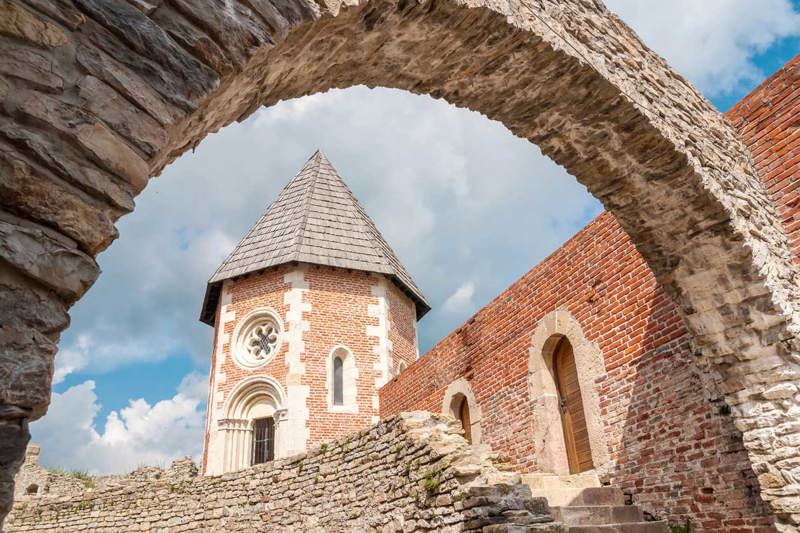 Copyright © Sisterscom.com / Depositphotos
Copyright © Sisterscom.com / Depositphotos Medvedgrad
Nestled on the southern slopes of Mount Medvednica, Medvedgrad is a medieval town overlooking Zagreb and its surroundings with spectacular views. Built in 1242, following the Tatar invasion, the village is an example of historical preservation. Inside you can admire the Gothic chapel dedicated to Saints Philip and James and the Altar of the Fatherland, a memorial in honor of Croatian soldiers who died during the War of the nineties.
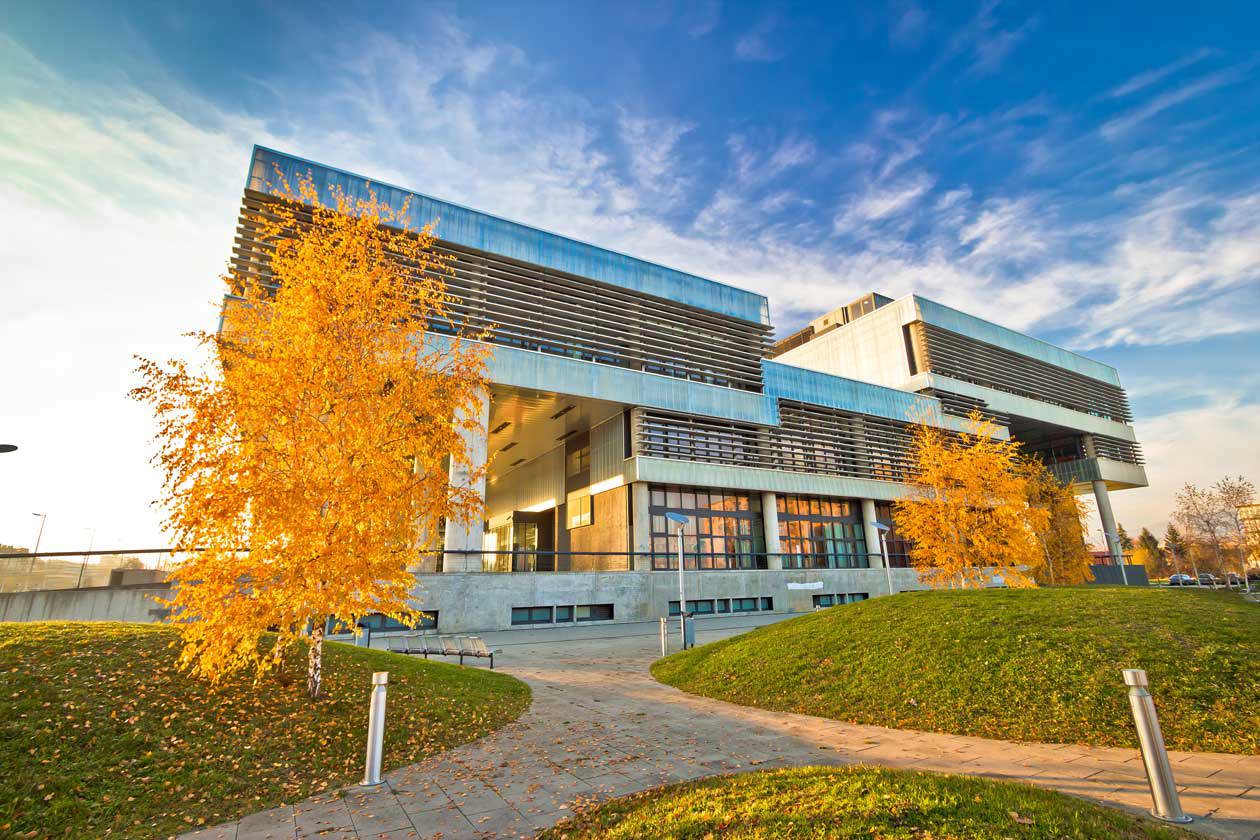
Copyright © Sisterscom.com / Depositphotos
Museum of Contemporary Art in Zagreb
Founded in 1954, the Museum of Contemporary Art in Zagreb houses a collection that includes around 9,000 works, ranging from modern to contemporary art. Among the treasures kept are donations of great value, such as the eclectic collection of Benko Horvat and a surrealist cycle signed by Josip Seissel. Although it does not have a permanent display, the Museum organizes thematic and monographic exhibitions, highlighting important Croatian and international artists, as well as offering exhibitions from its rich collection.
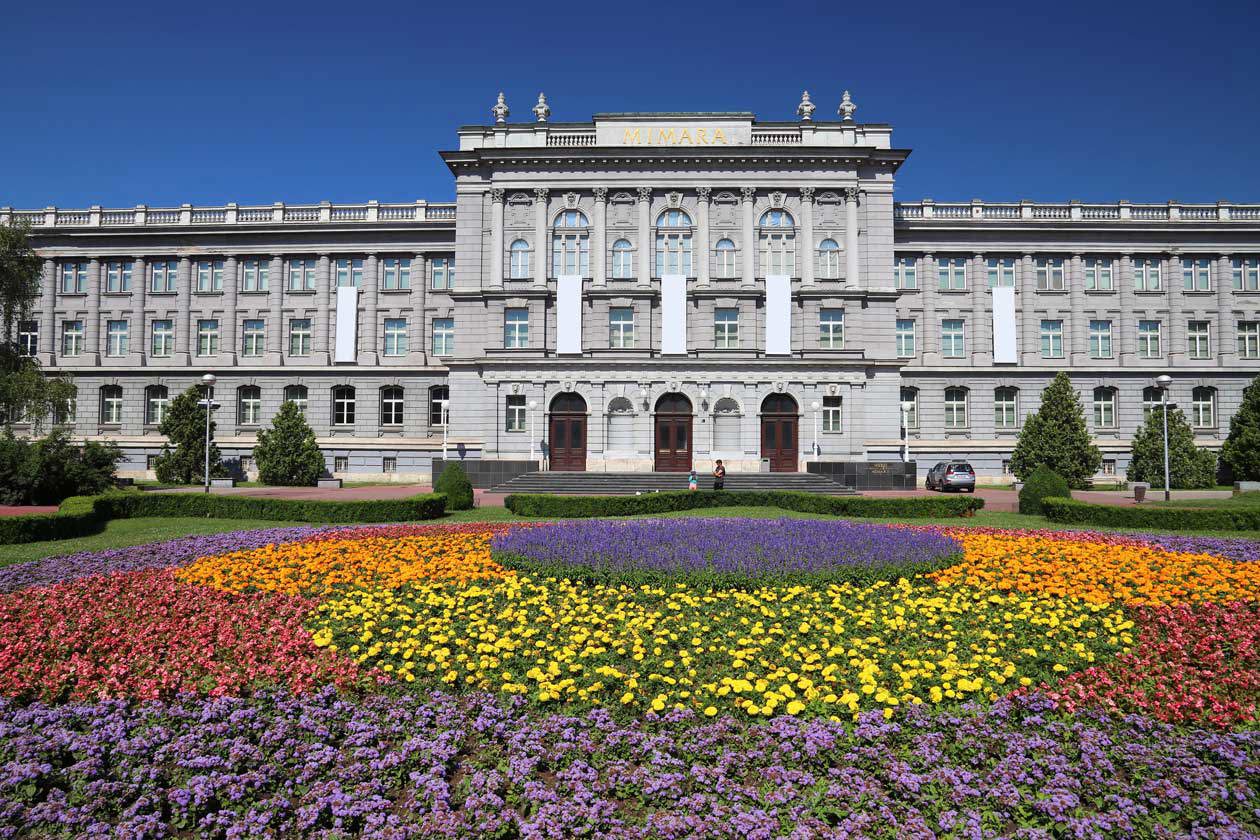
Copyright © Sisterscom.com / Depositphotos
Mimara Museum
The Mimara Museum, founded thanks to the donation of Ante and Wiltrud Topić Mimara and opened in 1987, is located in a neo-Renaissance palace. Its collection includes over 3,000 works of art with paintings and drawings by Raphael, Velázquez, Rubens, Rembrandt, and Goya, as well as sculptures spanning periods from antiquity to the twentieth century. The museum also houses archaeological rarities from ancient Egypt and Greece, as well as a collection of artistic glass. In addition, the Far East section includes rare items made of jade, enamel and rhinoceros horns.
Partnership with GetYourGuide
Tours and excursions
News & Useful info
You might be interested in
Other destinations
Airports nearby Zagreb



















